
Roots
In the quiet contemplation of a single strand, one finds not merely a biological structure, but a living archive of heritage. For individuals of Black and mixed-race ancestry, textured hair holds within its very coil and curve generations of stories, traditions, and a profound, enduring spirit. To speak of its role in resistance narratives is to delve into the very essence of cultural survival, a legacy sculpted not just by styling, but by the relentless assertion of self in the face of erasure.
Consider the delicate dance of amino acids forming keratin, the very building blocks of a hair strand. This elemental biology, common to all humanity, takes on unique forms in textured hair, each curl pattern representing a biological marvel. From the tightly bound helix of 4C coils to the more open loops of 3A waves, the architecture of textured hair demands particular care, a practice deeply rooted in ancestral wisdom and an understanding of its inherent qualities. The scientific lexicon of hair types, while offering a framework for discussion, cannot fully capture the deep cultural significance and resilience held within each pattern.
These classifications, sometimes prone to biases of origin, must always be contextualized by the historical naming conventions and the lived experiences of those whose hair they describe. Traditionally, hair texture was not a mere aesthetic preference; it was a physical manifestation of lineage, status, and spirit. In West African societies, for example, a person’s hairstyle could instantly convey their tribe, marital status, age, or even their wealth.
Textured hair, from its very cellular makeup to its outward appearance, is a testament to the biological diversity and cultural richness of human heritage.

Hair Anatomy and Heritage
The science of textured hair begins at the follicle, where the shape of the follicle determines the curl pattern. A flatter, elliptical follicle produces highly coiled or kinky hair, while a more circular follicle tends toward straighter strands. This distinction dictates how natural oils travel down the hair shaft, how moisture is retained, and how prone the hair is to shrinkage and breakage. Historically, communities understood these properties implicitly, developing methods to cleanse, moisturize, and protect hair long before modern scientific terminology emerged.
Their knowledge, passed down through generations, often focused on nurturing the hair’s natural tendencies rather than coercing it into an unnatural state. These ancestral practices, therefore, lay a foundation for understanding the biological needs of textured hair, echoing wisdom that modern science now frequently validates.
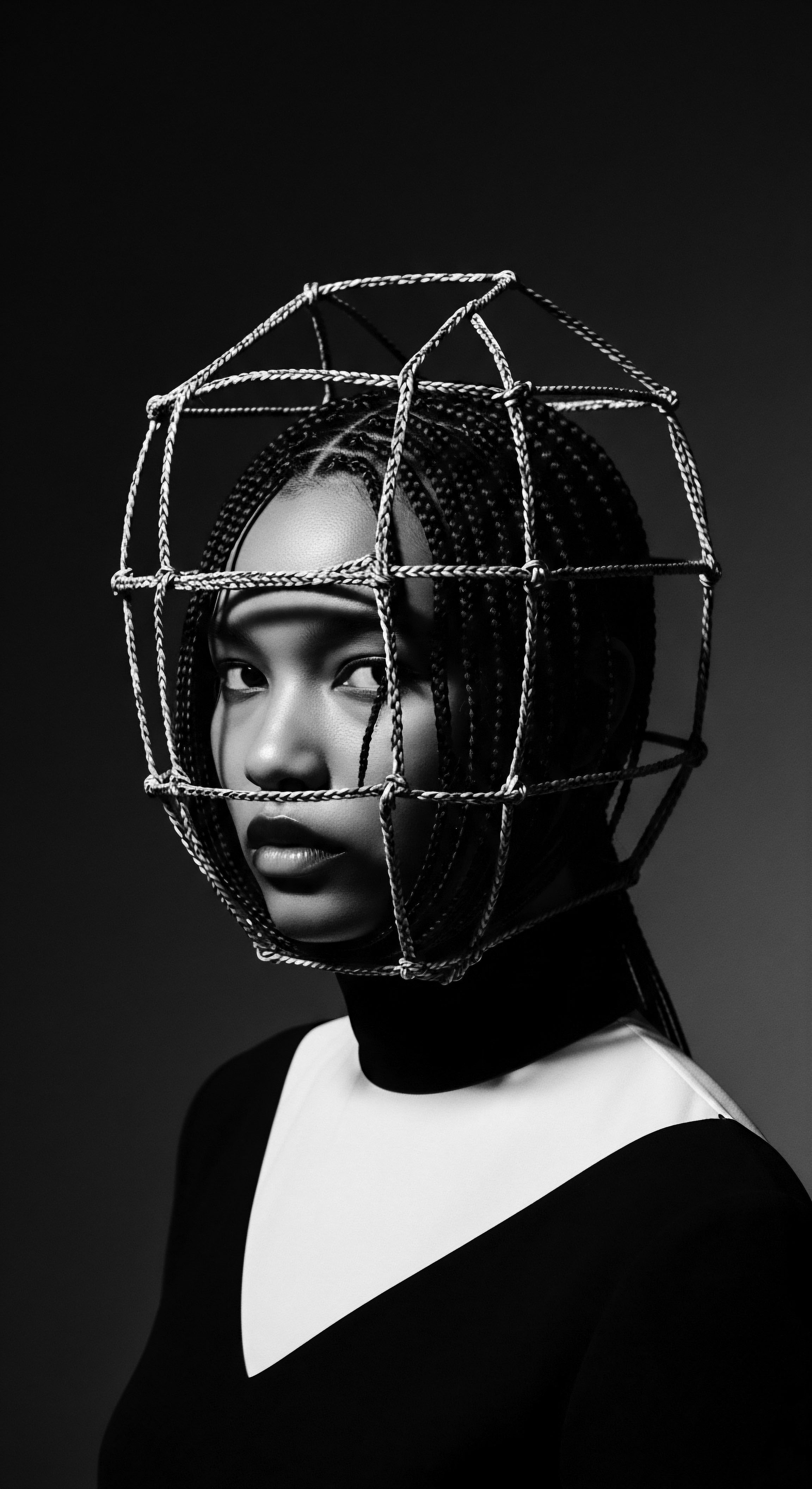
Classification Systems and Cultural Echoes
While contemporary hair typing systems, such as the Andre Walker system, offer a standardized way to categorize textures (from Type 1 straight to Type 4 kinky, with sub-classifications), these are relatively recent inventions. The deeper understanding of hair typology for our ancestors was interwoven with social meaning. The very language used to describe textured hair in the diaspora often carries the weight of historical oppression, with terms like “kinky” or “nappy” once employed as derogatory labels to dehumanize enslaved Africans. Reclaiming these terms, or moving beyond them to celebrate the authentic forms of textured hair, stands as a profound act of resistance.
Our ancestors, however, possessed a sophisticated understanding of hair differences, translating them into specific communal styles and care rituals that honored each person’s unique heritage. These historical practices were not about fitting into a narrow beauty standard, but about belonging and expressing identity.
- Yoruba Irun Didi ❉ A traditional braiding technique in West Africa, signifying intricate artistry and often carrying social or spiritual messages.
- Himba Ovambo Locs ❉ Styled with red ochre and butter, these locs symbolize a deep connection to the earth and ancestral spirits among the Himba people of Namibia.
- Maasai Morans’ Styles ❉ Distinctive hairstyles for young Maasai warriors marked their initiation and status within the community, often involving intricate patterns or specific lengths.

The Lexicon of Heritage and Resistance
The language surrounding textured hair is rich with meaning, shifting across centuries and continents. Words like “locs,” “braids,” “twists,” and “cornrows” are more than technical descriptions; they are markers of heritage, survival, and renewed pride. The term “cornrows,” for instance, is thought to have originated from the rows of corn fields, a poignant reminder of agricultural labor and the landscapes of forced migration, but also a symbol of ingenuity. During the transatlantic slave trade, the deliberate shaving of African captives’ heads was an act of brutal dehumanization, a systematic attempt to strip them of their identity and cultural memory.
Yet, even in this profound act of erasure, the resilience of textured hair endured, its persistent growth serving as a living testament to an unbreakable spirit. The ability to grow back, to defy attempts at permanent alteration, made hair a silent, powerful force in the narratives of survival.
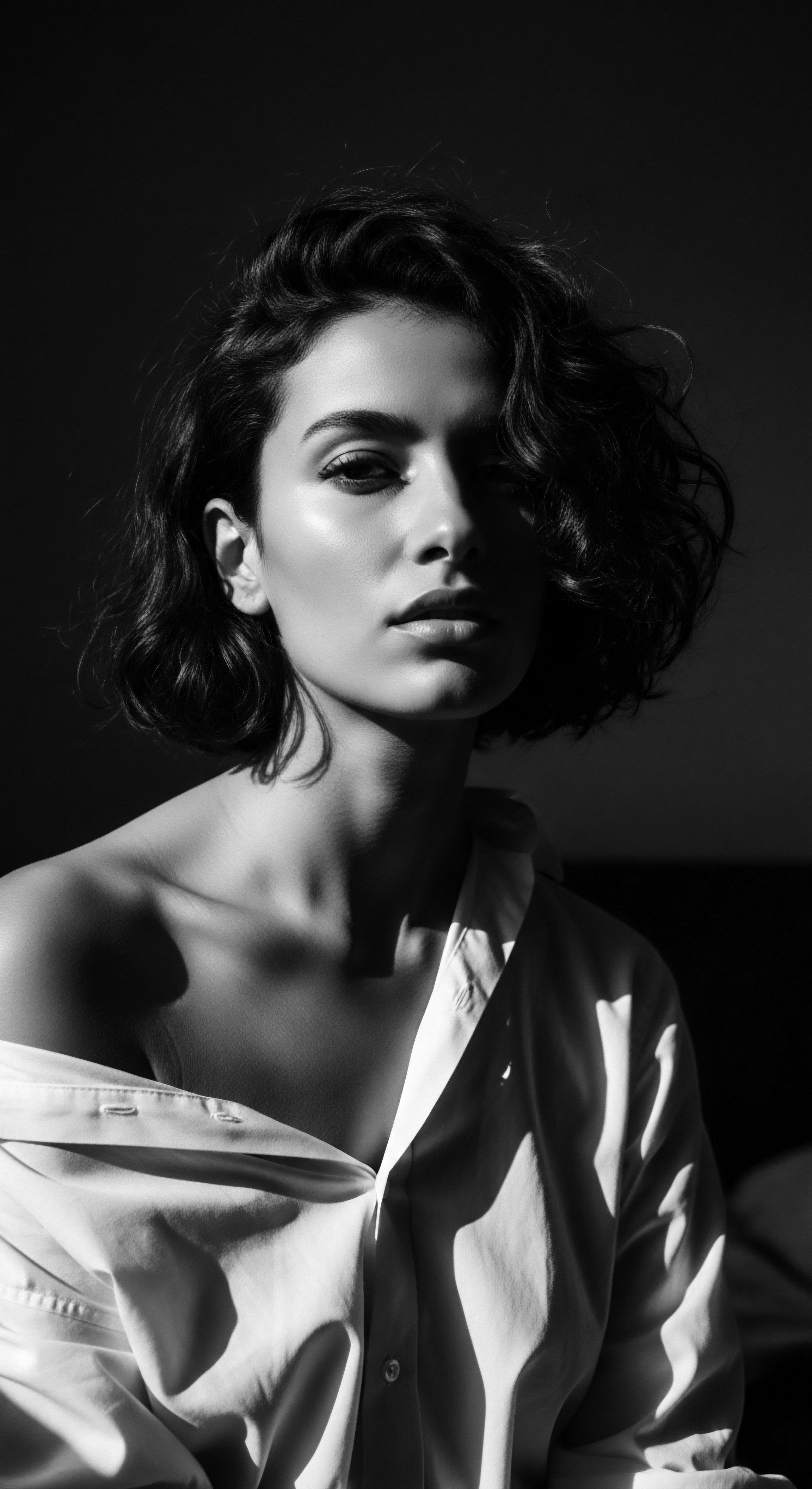
Hair Growth Cycles and Ancestral Rhythms
The cyclical nature of hair growth—anagen (growth), catagen (transition), telogen (resting), and exogen (shedding)—is universal. However, factors influencing these cycles, such as nutrition, climate, and stress, have profoundly impacted textured hair communities throughout history. Enslaved populations, deprived of adequate nutrition and subjected to brutal conditions, faced immense challenges in maintaining hair health.
Despite this, they ingeniously adapted, using available natural resources like plant oils and animal fats for care, a testament to their enduring ancestral wisdom. These early, resourceful care practices, born of necessity and knowledge of the land, formed the groundwork for many traditional hair care regimens that continue to inform wellness practices today, emphasizing a deep connection to the earth and its offerings.
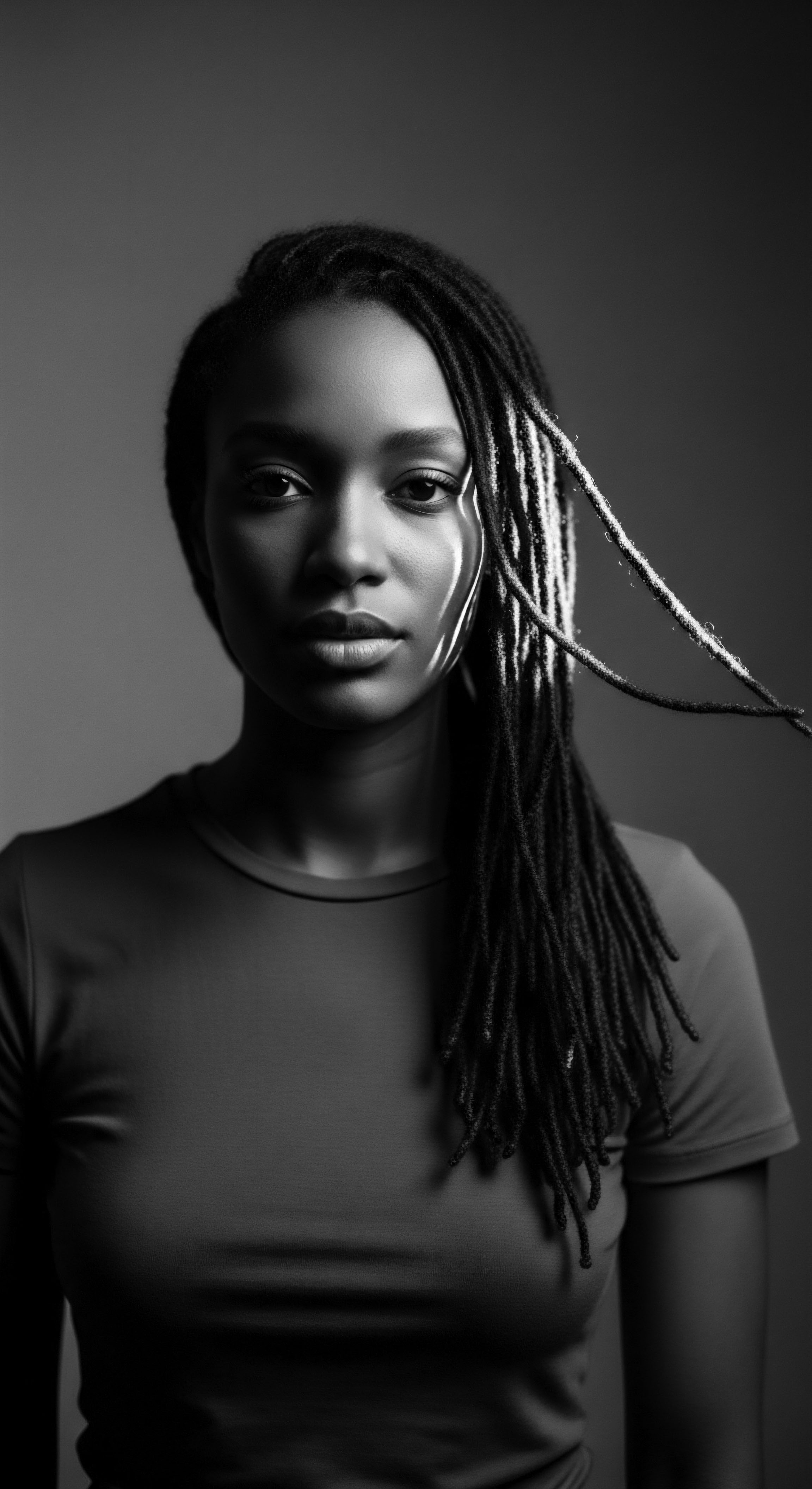
Ritual
Hair, especially textured hair, has long served as a canvas for cultural expression and a silent herald of defiance. The rituals of styling, from ancient braiding techniques to modern protective styles, carry the echoes of ancestral resilience, transforming simple strands into statements of identity and belonging. These practices are not mere aesthetics; they are living traditions, deeply connected to historical narratives of resistance and cultural preservation.
The shaping of hair became a clandestine language, a means of survival, and a beautiful act of holding onto self amidst systematic attempts at erasure. The dexterity required, the hours shared in communal grooming, fostered bonds and transmitted stories across generations, making the process itself a profound ritual.
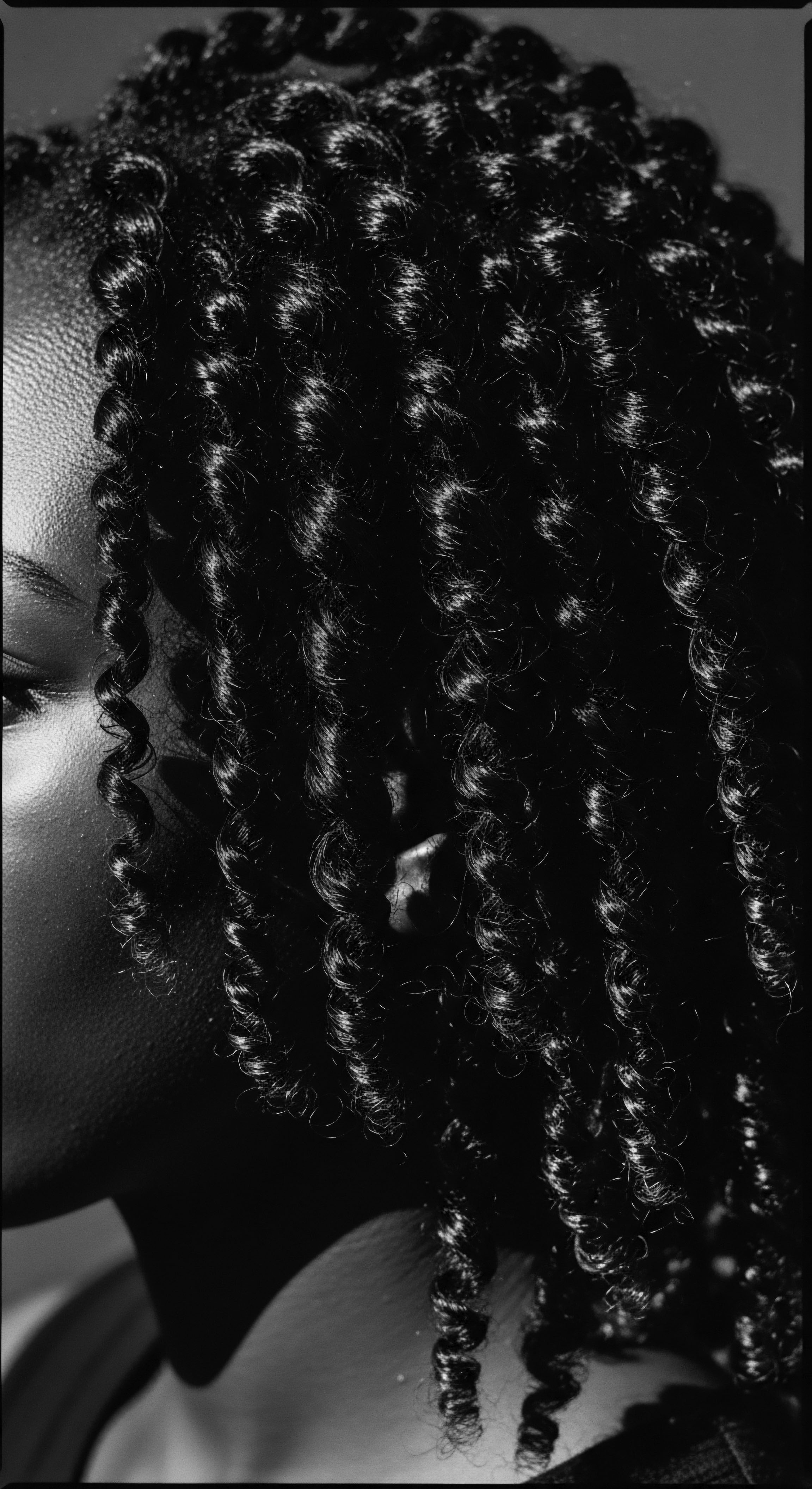
Protective Styling as Ancestral Ingenuity
Protective styles, such as braids, twists, and cornrows, are not recent trends but have deep roots in African heritage, stretching back thousands of years. These styles served practical purposes, shielding hair from environmental damage and minimizing manipulation, which aligns with modern hair science for length retention. However, their significance far transcended practical utility. During the transatlantic slave trade, these styles became tools for survival and resistance.
Enslaved African women, for example, would braid rice seeds into their hair before forced migration, a desperate act of preserving their sustenance and cultural memory in an unknown land. This act embodies an extraordinary blend of foresight, ingenuity, and a fierce will to survive, using hair as a vessel for life itself. Beyond sustenance, cornrows were also used as coded maps to freedom, intricate patterns delineating escape routes or signaling safe houses for those fleeing bondage.
Hair braiding, a technique passed down through generations, became a covert communication system for those seeking liberation, transforming beauty into a tool for survival.
These practices highlight a powerful truth ❉ the artistic expression of hair was intrinsically linked to the struggle for liberty. The creation of these styles, often taking hours, became a communal gathering, a space where elders shared wisdom, where solidarity was reinforced, and where the collective spirit of resistance was rekindled. The hands that braided were also hands that nurtured hope, transforming hair into a testament of the unbroken heritage of a people.

Natural Styling Embracing Authentic Forms
The journey to embracing natural texture has been a long, cyclical one, deeply tied to movements of Black liberation and self-acceptance. In pre-colonial Africa, natural hair was celebrated in myriad forms, with hairstyles often signifying social status, age, or spiritual beliefs. The imposition of Eurocentric beauty standards during and after slavery led to widespread practices of hair straightening, as coerced assimilation became a means of survival and perceived upward mobility.
The mid-20th century, however, witnessed a powerful resurgence of natural hair as a symbol of defiance and Black pride. The Afro hairstyle , in particular, became an iconic emblem of the Civil Rights and Black Power movements of the 1960s and 70s.
Icons like Angela Davis wore their Afros not merely as a fashion statement, but as a deliberate political declaration against white beauty standards, embodying a powerful assertion of identity and a rejection of assimilation. This cultural shift, often accompanied by the slogan “Black is Beautiful,” heralded a reclaiming of ancestral aesthetics and a commitment to self-love. The very act of wearing natural hair became an act of protest, challenging a society that deemed anything other than straight hair as unprofessional or unattractive.

What is the Cultural History of Hair Tools?
The tools used for styling textured hair possess their own rich history, evolving from rudimentary instruments to specialized implements, each reflecting the ingenious adaptation of communities. In ancient African societies, combs were meticulously crafted from wood, bone, or even ivory, often adorned with symbolic carvings that spoke to tribal identity or spiritual beliefs. These were not mere tools for detangling; they were objects of cultural significance, sometimes used in ceremonial contexts. With the transatlantic slave trade, access to such tools became severely limited, forcing enslaved individuals to improvise.
They used whatever was at hand, from crude sticks to modified sheep fleece carding tools, to manage their hair. The Afro pick, a modern descendant of these ancestral combs, gained immense cultural significance during the Civil Rights Era. It became a symbol of Black power and a rallying point for those embracing their natural hair.
The evolution of styling tools is a testament to the persistent human desire for expression and care, even under the most arduous circumstances. These tools, whether ancient or modern, are not just implements; they are artifacts of a continuing dialogue between heritage and ingenuity, reflecting a profound commitment to self-preservation and communal identity.
| Historical Tool Ancestral Combs (Wood, Bone, Ivory) |
| Purpose and Heritage Context Detangling, parting, spiritual symbolism; often part of communal grooming rituals in pre-colonial Africa. |
| Modern Parallel or Cultural Significance Wide-tooth combs, detangling brushes; continued use of picks as symbols of Black pride. |
| Historical Tool Improvised Tools (Sticks, Modified Carding Tools) |
| Purpose and Heritage Context Necessity-driven management during slavery; a testament to survival and adaptation. |
| Modern Parallel or Cultural Significance The ingenuity inspires modern resourcefulness in product creation and application. |
| Historical Tool Hot Combs/Pressing Irons |
| Purpose and Heritage Context Achieving straightened styles, often driven by Eurocentric beauty standards post-emancipation. |
| Modern Parallel or Cultural Significance Flat irons and blow dryers; ongoing conversation around heat damage and embracing natural texture. |
| Historical Tool Afro Pick |
| Purpose and Heritage Context Maintaining Afro styles during the Civil Rights Movement; a potent symbol of Black power and cultural affirmation. |
| Modern Parallel or Cultural Significance Continues as an icon of identity and resistance, widely recognized globally. |
| Historical Tool These tools stand as enduring symbols of the evolving relationship between textured hair, cultural heritage, and the journey toward self-definition. |

Relay
The sustenance of textured hair, far from being a mere cosmetic concern, represents a continuous relay of ancestral wisdom, adapting to new challenges while holding fast to its profound heritage. Holistic care for textured hair is not just about product application; it is a philosophy that intertwines physical well-being with spiritual and communal health. This approach, often overlooked by mainstream beauty narratives, finds its deep origins in the traditions of African and diasporic communities, where hair care was an integral part of daily life, wellness, and collective identity.

Building Personalized Regimens Embracing Ancestral Wisdom
Crafting a regimen for textured hair requires an understanding of its unique needs for moisture, protection, and gentle handling. This modern pursuit finds resonance in the practices of our ancestors, who instinctively understood the importance of tailored care. Before the advent of mass-produced hair products, communities relied on natural ingredients sourced from their immediate environments. Shea butter, a revered staple from West Africa, has been used for centuries to moisturize and protect hair due to its rich emollient properties.
Similarly, various plant oils and herbal infusions served as conditioners and treatments, addressing specific concerns like dryness or scalp health. These historical methods were not arbitrary; they were born from observation, experimentation, and a deep, intuitive knowledge of botanicals. The wisdom passed down through generations emphasized consistency and natural replenishment, principles that remain cornerstones of healthy textured hair care today. The act of caring for hair, often performed communally, also served as a moment for intergenerational bonding and storytelling, ensuring the transmission of both practical knowledge and cultural narratives.
For example, the Yoruba people of Nigeria used a range of natural ingredients, including specific plant extracts and oils, in their hair care rituals. These practices were often performed by skilled practitioners and were integrated with spiritual beliefs, seeing hair as a conduit for connection to the divine. This profound connection between hair, nature, and spirituality shapes the very fabric of ancestral wellness philosophies, influencing how contemporary individuals approach their own care routines.

What Role does Nighttime Care Play in Preserving Heritage?
The ritual of nighttime hair protection is a deeply ingrained practice within textured hair heritage, serving both practical and symbolic purposes. For centuries, head coverings have been used across African cultures to protect hair from dust, retain moisture, and preserve intricate styles. This practice, often seen in the form of headwraps or scarves, transcends simple convenience; it is an act of preserving the integrity of one’s hair and, by extension, a part of one’s identity.
The modern bonnet, a ubiquitous tool in textured hair care, is a direct descendant of these ancestral head coverings. Its smooth, often satin or silk, lining reduces friction, preventing tangles, breakage, and moisture loss during sleep.
This daily act of covering one’s hair at night is a subtle but potent act of self-care and cultural continuity. It speaks to a deep, inherited wisdom about hair health and a profound respect for the care required to maintain its vitality. The bonnet, therefore, is not merely an accessory; it is a quiet symbol of heritage, a testament to generations of women and men who understood the necessity of protecting their crown, even in the darkness of night. This ritual connects individuals to a lineage of care, reminding them that their hair is a precious part of their being, worthy of deliberate and thoughtful preservation.

Ingredient Deep Dives Rooted in Ancestry
A closer look at the ingredients historically revered for textured hair reveals a profound connection to the earth and its bounty. These were not chemically engineered compounds, but natural gifts. Below are a few examples:
- Shea Butter ❉ Sourced from the nuts of the African shea tree, this rich butter has been a cornerstone of West African hair care for millennia. It is known for its intense moisturizing and sealing properties, protecting hair from dryness and environmental stressors.
- Coconut Oil ❉ While perhaps more common in other parts of the world, its use in some African and diasporic communities for conditioning and scalp health is documented, prized for its ability to penetrate the hair shaft.
- Aloe Vera ❉ Used for its soothing and moisturizing properties for the scalp and hair, drawing on ancient botanical knowledge.
- Chebe Powder ❉ Originating from the Basara Arab women of Chad, this blend of herbs is used to strengthen hair, reduce breakage, and promote length retention through a specific ritual application.
These ingredients represent not just raw materials, but a living knowledge system passed down through generations, a legacy of natural wellness that continues to inform modern formulations for textured hair. Their effectiveness, recognized through centuries of practical application, now finds validation in contemporary scientific understanding of their molecular structures and benefits.

What Contemporary Challenges Echo past Struggles for Hair Acceptance?
Even today, individuals with textured hair confront societal biases that echo the historical struggles against enforced beauty standards. The pressure to conform to Eurocentric ideals, often requiring straightening or chemically altering natural hair, persists in professional and educational settings. This discriminatory pressure can manifest as subtle biases in hiring or promotion, or overt policies banning certain protective styles like locs or braids. For example, a 1972 study, although limited in scope, revealed that while 90 percent of young Black men in St.
Louis sported natural Afros, only 40 percent of young Black women did, indicating societal pressures disproportionately affecting women in their hair choices. This disparity speaks volumes about the enduring external pressures faced by Black women regarding their hair. However, legislative efforts like the CROWN Act in the United States aim to combat this race-based hair discrimination, recognizing that natural hair styles are integral to racial identity and heritage.
Problem-solving in textured hair care, therefore, extends beyond addressing dryness or breakage; it involves advocating for the right to wear one’s hair naturally, to celebrate one’s heritage without fear of professional or social repercussions. This ongoing fight is a direct continuation of historical resistance, a testament to the enduring power of hair as a symbol of identity and autonomy. The quest for holistic hair health now includes mental and emotional well-being, acknowledging the stress and trauma associated with hair discrimination. This comprehensive approach mirrors the ancestral understanding that the physical body, including hair, is interconnected with one’s spirit and community.
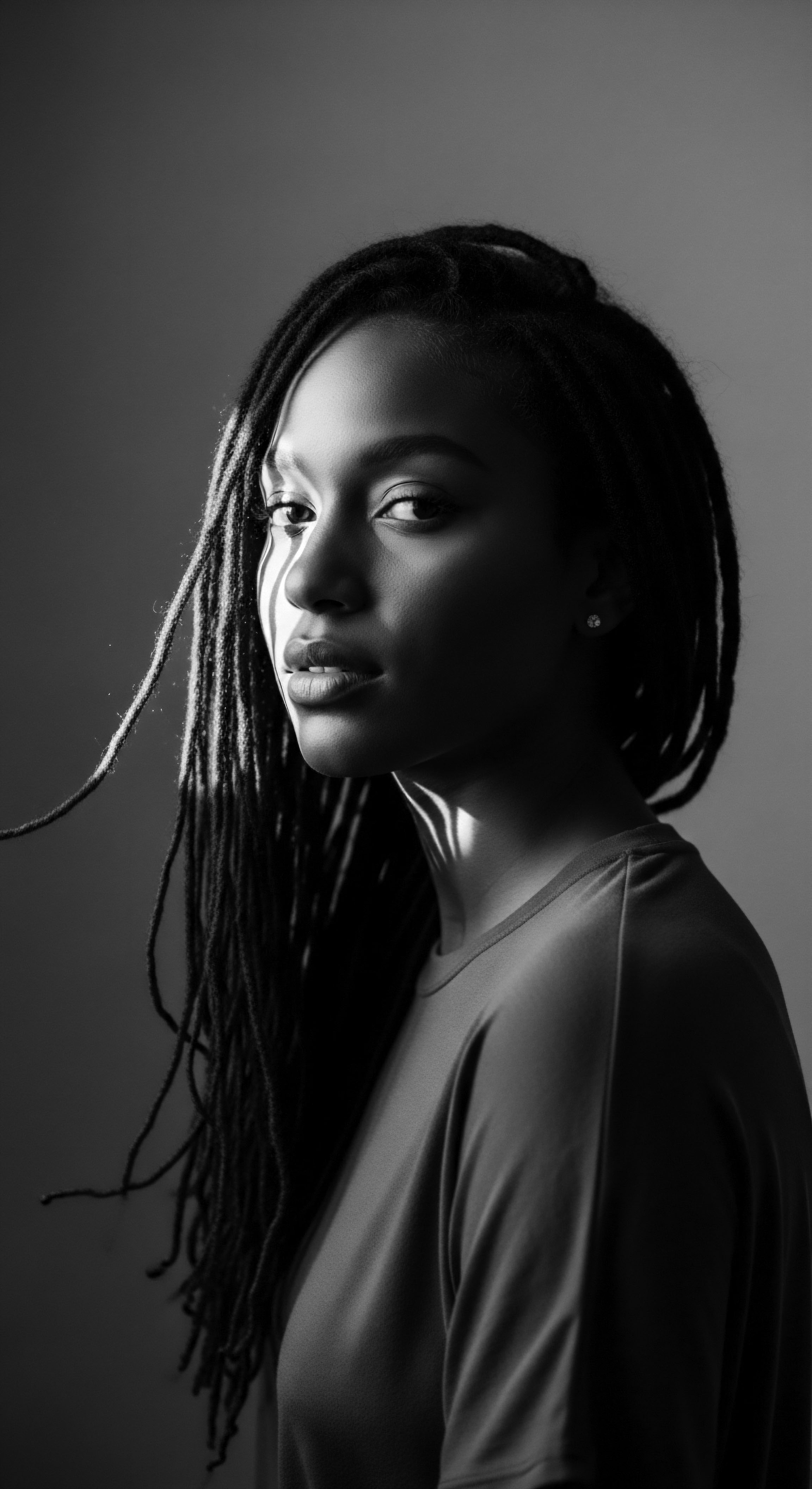
Reflection
The journey through the intricate world of textured hair, from its primal origins to its profound role in narratives of resistance, leaves us with a singular understanding ❉ a strand of hair is never simply a strand. It is a living filament, pulsating with ancestral memory, collective spirit, and the enduring power of self-definition. Each curl, each coil, each twist carries within it the whisper of defiance, the echo of resilience, and the vibrant rhythm of heritage that refuses to be silenced.
The Soul of a Strand is not a static concept; it is a dynamic, breathing archive, perpetually being written by those who wear their hair with pride, who care for it with intention, and who understand its sacred place in their lineage. It is a testament to those who braided maps to freedom, who wore Afros as crowns of liberation, and who today continue to challenge narrow beauty ideals with every authentic style. This ongoing narrative, steeped in the wisdom of the past and animated by the courage of the present, affirms that textured hair will always be a powerful symbol of an unbroken spirit, a connection to source, and a beacon for the unbound futures we collectively sculpt.

References
- Byrd, Ayana D. and Lori L. Tharps. 2014. Hair Story ❉ Untangling the Roots of Black Hair in America. New York ❉ St. Martin’s Press.
- Cobb, Jasmine Nichole. 2023. New Growth ❉ The Art and Texture of Black Hair. Durham ❉ Duke University Press.
- Dabiri, Emma. 2020. Twisted ❉ The Tangled History of Black Hair Culture. New York ❉ Harper Perennial.
- Flowers, Ebony. 2019. Hot Comb. New York ❉ Drawn and Quarterly.
- Johnson, T. A. and T. Bankhead. 2014. Hair It Is ❉ Examining the Experiences of Black Women with Natural Hair. Open Journal of Social Sciences 2 (2) ❉ 63–78.
- Kimbell, Regina. 2004. My Nappy Roots ❉ A Journey Through Black Hair-itage. Independent Film.
- Majali, A. M. M. A. Mabunda, and S. M. Ndlovu. 2017. The Significance of Hairstyling in Black Women’s Identity. Gender & Behaviour 15 (2) ❉ 10188-10196.
- Patton, Tracey Owens. 2006. Hey Girl, Am I More Than My Hair? African American Women and Their Struggles with Beauty, Body Image, and Hair. Black Women, Gender and Families 1 (2) ❉ 51–75.
- Rosado, Sybille. 2003. Contested Identities ❉ African Diaspora and Identity Making in a Hair Braiding Salon. PhD diss. New School University.
- Walker, Andre. 1997. Andre Walker Hair Typing System.
